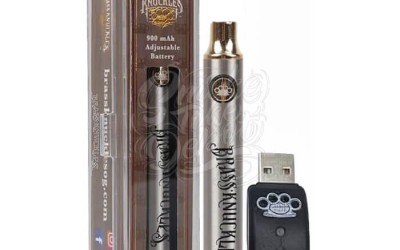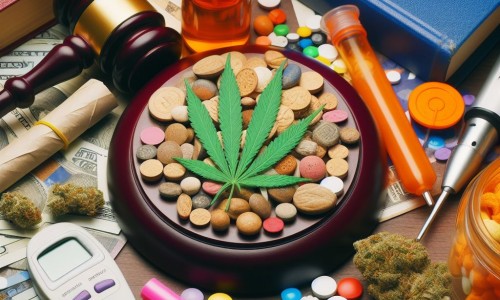How Can You Tell If THCA Flower Is Lab-Tested and Safe to Use?

Key Indicators and Safety Tips
THCA flower is gaining popularity, but not every product you see online or in stores is safe or has been tested in a lab. People who want to buy THCA flower on Dr Ganja can look for lab reports that show exactly what is in the hemp, including THCA amounts, and verify that the product is within legal limits. The most reliable way to determine if THCA flower is lab-tested and safe is to confirm that it comes with a current, easy-to-read lab report from a trusted testing facility.
When choosing THCA hemp, look for a QR code or a link on the packaging that leads to the lab results. These reports should display the THCA level, delta-9 THC content, and indicate whether any harmful substances, such as pesticides or heavy metals, are present. Being able to read and understand these lab reports helps a person feel more confident about what they are using.
Anyone looking to try THCA flower should also pay attention to product details, such as the source, date of testing, and the lab name. This information helps show if the product matches what is advertised. Shoppers can make safer choices when they choose THCA flower backed by clear lab testing.
How To Verify If THCA Flower Is Lab-Tested
Lab testing ensures that the THCA flower contains no unwanted chemicals, meets safety standards, and is the product described on the label. Buyers can use specific steps to confirm that their flower matches its reported test results.
Understanding Third-Party Lab Reports
Third-party lab reports, also known as Certificates of Analysis (COAs), are documents produced by independent laboratories. These labs test various aspects of THCA flower, including THC levels, other cannabinoids, and potential contaminants such as pesticides or heavy metals.
A genuine lab report should specify who conducted the testing, the date of the test, and the methods used. Having a third-party lab involved adds another layer of trust, since it means the grower or seller is not running the test themselves.
Look for a direct PDF or a secure digital link to the actual lab documents. Avoid products that only mention testing without showing the real paperwork or only list basic numbers.

Recognizing Key Information on COAs
A valid COA will break down the detailed findings for each compound and contaminant tested. Key sections often include:
- Cannabinoid Profile: Lists the percentages of THCA, Delta-9 THC, CBD, and other cannabinoids.
- Contaminant Screen: Shows whether any pesticides, heavy metals, mold, or microbes were found.
- Batch Numbers and Dates: Helps match the COA to the actual flower.
When reading a COA, confirm that the THCA levels match what is advertised. Be wary of unusually high numbers or strange results—these could signal problems, such as sprayed hemp masquerading as THCA flower.
A legitimate COA should be straightforward to read, with well-organized tables or charts and no missing information.
Checking for Accredited Lab Credentials
Reputable labs will show their credentials or certifications on the COA. Look for the lab’s logo, proper business name, and contact details. Certificates from recognized organizations, such as ISO/IEC 17025, are a good indication that the lab employs rigorous testing methods.
Accredited labs follow guidelines set by industry standards, which adds confidence to the results. Verify that the COA is signed or stamped by a lab technician, and check if the lab offers a way for the public to verify reports through a website or a report number lookup tool.
This helps weed out fake or reused lab reports that can sometimes appear with untested products.
Guaranteeing The Safety Of Lab-Tested THCA Flower
Lab-tested THCA flower gives buyers insight into what they are using. Test results reveal both the good and the bad, like purity, potency, and details about how the flower was made.
Analyzing Contaminant Results
Contaminant screening shows if the THCA flower contains pesticides, heavy metals, mold, or solvents. When checking a lab report, look for a “Pass” label in the contaminant or safety section. This means the product met the allowed limits for harmful substances.
A table in the report often lists specific contaminants and their detected amounts. Some might show “ND” (Not Detected). If there are numbers far above the legal or safe limits, the flower might not be secure.
Many buyers want to avoid inhaling unsafe chemicals. Checking that all listed contaminants are within safe limits gives confidence about the flower’s purity.
Evaluating Potency And Cannabinoid Content
THCA flower potency indicates to users how strong the effects may be. Good lab reports list how much THCA, THC, and minor cannabinoids are present in milligrams per gram or percent by weight.
- THCA content: The prominent cannabinoid, typically listed as the highest.
- THC & total cannabinoids: Should be shown clearly with actual numbers.
- Minor cannabinoids: Sometimes included, like CBD or CBG, which may alter effects.
Flowers with very high THCA and almost no THC before heating are standard. If numbers seem too high or the label says “THCA” without providing details, this may be misleading. Double-checking these values lets users know what they are consuming.
Assessing Manufacturing Transparency
Lab reports should include details about the batch, harvest date, and sample ID. This information shows the flower was tested from a specific harvest and is not a generic report. Results should be recent, usually within the last six months.
Look for a clear link between product packaging and the information in the report. If a QR code or batch number is present, it should match what is written on the product bag or jar.
Manufacturing transparency also means the lab is independent. Third-party testing—conducted outside of the supplier—adds confidence that the report is not altered or fabricated. A signed or stamped report often indicates that an outside lab has reviewed the sample.
Conclusion
Lab testing helps people know what is in the THCA flower before using it. These reports list the levels of cannabinoids and show if the flower meets legal standards.
Checking for a Certificate of Analysis (COA) enables users to identify safe products and avoid potential risks. Following these simple steps can help you make better choices and ensure safety. Staying informed about lab results makes THCA use more confident and clear.






